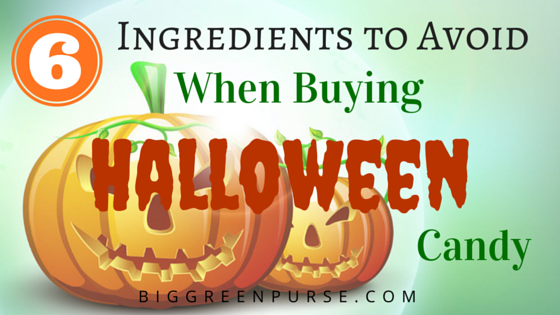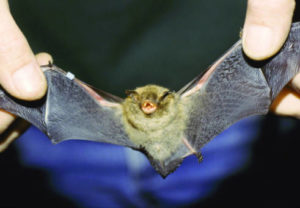Is your Halloween candy going to be a trick, or a treat? It depends on what it’s made from. Sure, candy is supposed to be sweet and tasty. But some of it is so loaded with synthetic additives and manufactured ingredients that you might as well get it from a laboratory instead of the candy counter.
That’s why I pulled together this list of six ingredients to avoid in Halloween candy. Don’t worry – you’ll also find recommendations on what makes Halloween candy better.
TRICKS

2) Artificial Sweeteners – This group includes aspartame, sucralose, saccharin and acesulfame K. Yes, they lower calories. But recent research suggests that artificial sweeteners may increase sugar cravings and lead to weight gain. Given how much candy kids eat on Halloween, the less that contains artificial sweeteners, the better.
3) Artificial Food Coloring and Dye – You’ll be able to recognize these because they’re often accompanied by a number, like Red #3. Others to avoid include Red #40, Yellow #5 and Blue #2. Some research shows a link between food dyes and cancer and ADHD.
5) Artificial Flavorings – Phony flavors are usually concoctions made up of hundreds of chemicals. That’s why so much candy tastes so distinctly… unnatural. In fact, be aware that the word “flavor” often means that the taste of the candy was fabricated out of chemicals in a lab, not derived from the actual fruit.
6) GMOs – GMOs, or genetically modified organisms, have been integrated into many conventional agricultural crops, including corn, soybeans, and various grains. Some research groups are concerned that there is a link between consuming foods produced from GMOs and disorders like autism, infertility, and indigestion, as well as allergies.

TREATS

√ Organic Certification – Candy packages bearing the USDA organic seal indicate that the candy was produced from organic ingredients, including fruit, nuts, grains, and dairy products.
√ Real Food – Eating a peanut butter cup? It should contain real peanuts. Going for a peppermint patty? Look for oil of peppermint or spearmint, not mint “flavor.” If you don’t recognize or can’t pronounce the ingredients listed on the package, chances are they’re not natural!
√ Real Fruit Juice – Fruit juices impart natural color, flavor and sweetness. Plus, doesn’t it make a lot more sense to eat a cherry lollipop made from real cherries and cherry juice instead of synthetic cherry flavor?
√ Natural sweeteners – Those could include molasses, honey and agave, along with sweet fruit juices.
√ Non-GMOs – Candy made without GMO ingredients probably contains the NON GMO Project Verified label.
Bottom Line…
Read the label before you buy so you know what you’re actually getting. Look for organic and natural ingredients, or at the very least, the words “no artificial colors, flavors, sweeteners or preservatives.” Even if you can’t bear to give up your favorite candy bar or gummy worm, maybe you can switch out some of the other “regular” candy you buy for options that are healthier and just as satisfying.
Related Posts:
Green Halloween Costumes – Swap Before You Shop
Organic Halloween Candy Tastes Good, Too!













